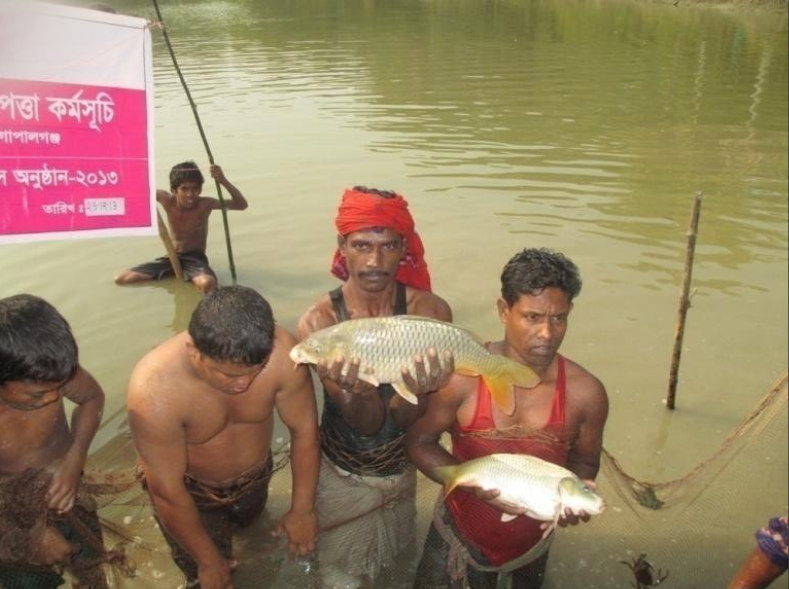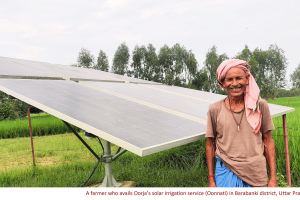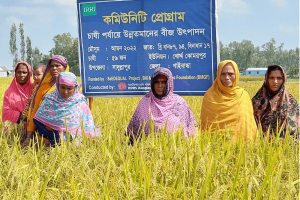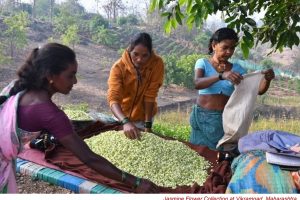Bangladesh is yet to fully exploit its vast flood plains for increasing fish production. BRAC has piloted an approach that can sustainably enhance the productivity of these flood plains through community based fish production. Md. Sirajul Islam, Sankar Kumar Biswas, Md. Mazanur Rahman and K.M Shahriar Nazrul from BRAC share their experiences with this approach here.
CONTEXT
Though aquaculture production in Bangladesh increased considerably during the past four decades, the production is almost pond based. The country is yet to fully exploit its vast open/semi-closed water bodies that remain almost fallow throughout the year for increasing its fish production. During 2011-12, the fisheries production from floodplains was 257 kg/ha in contrast to the pond production of 3,615 kg/ha. As the country has 2,710,766 ha of seasonal floodplain area where required water depth for fish culture is obtained atleast 4-6 months, it is important to explore appropriate options for effective use of these physical resources (DoF, 2013).

Box 1: Fisheries in Bangladesh
About 10% of Bangladesh population is directly or indirectly depend on fisheries for their livelihood. 60% of its national animal protein consumption is from fish. 2.46% of Bangladesh’s export earnings come from fish and fish products. This sector contributes 4.39% to Bangalesh’s Gross Domestic Product (DoF, 2013). The fisheries sector is also playing an important role in the economic up-liftment of the poor of Bangladesh. The contury has three major fisheries resources, namely Inland capture (34%); Inland Culture (48%) and Marince Capture (18%). Inland fisheries comprises of rivers, ponds, estuaries, beels, floodplains, haors, baors, brackish water etc. where t here are 260 fish and 24 prawn species. However, the availability of indigenous fishes have reduced largely in re cent times mainly due to loss of natural habitat of fishes due to intensive agricultural operations and changing climatic conditions.
INTERVENTIONS
Considering this issue, Agriculture and Food Security Program (Box 2) of BRAC has initiated a step to conserve indigenous fishes and increase fisheries production through roper management of fallow water bodies of the Northern and Southern Bangladesh.
Box 2: Agriculture and Food Security Program (AFSP)
AFSP is trying to enhance food security and reduce hunger and malnutrition through promotion of environmentally sustainable agricultural production system. Besides agricultural research, development and marketing, the program is also disseminating agricultural technologies through farmers’ participatory large scale block demonstration. The strategy is to convert single cropped areas to double or triple cropped areas, introduce stress tolerant crops and fish varieties and accommodate high value non-rice crops in the rice-based cropping systems through the use of shorter maturing crop varieties.
AFSP follows a “community based management approach” where in communities living near to the flood plains are encouraged to form committees and each committee forming different sub-committees to manage different activities related to fish production. Its key objectives include:
- Promote effective management of the unused/under-used water bodies through sustainable fish culture,
- enhance overall fish production including conservation of few small indigenous fish species,
- meet the protein demand of the poor communities, create an alternative source of income and improve their socio-economic conditions.
It is expected that by stocking quality fingerling and good management practice in these vast area of seasonal waterbodies the overall fish production of the country can be maximized to several folds. In some parts of Bangladesh, this approach has been successful in converting waste lands to resourceful water bodies. In 2013, the program has organized these activities in 7 different floodplains having 73 acres in Pirojpur Sadar, Bagerhat Sadar, Kachua, Tungipara, Kaunia, Lalmanirhat Sadar and Pirgacha Upazilas.
GOOD PRACTICES
Survey and selection of participants: At the very beginning of the culture season the adjacent communities around the floodplain was surveyed to identify the probable participants. The following criteria are used for the final selection.
- marginal farmer
- engaged in aquaculture either in own land or by lease
- permanent resident of the locality
- female farmer preferred incase she is the head of the family
- have a national ID card and
- interested in receiving training or orientation from the program
Group formation: To ensure the successful floodplain production, committees were formed with the selected participants. Each committee forms sub-committees having 5 members in each. The organizing committee members were selected from the leaders of the different sub-committees. These committees are solely responsible for different post-stocking activities and preventing harvest of the fish stock before the appropriate time.





Add Comment